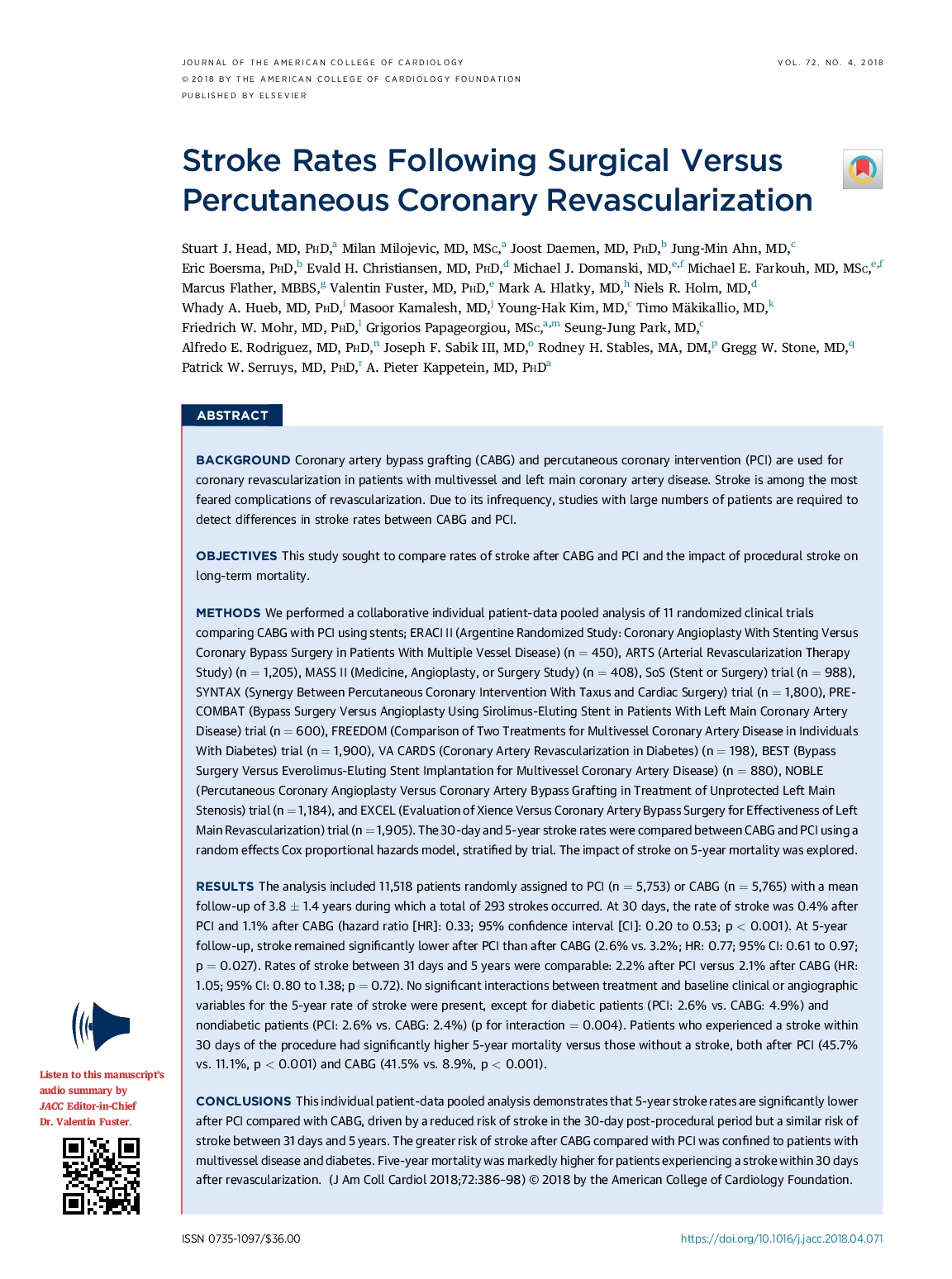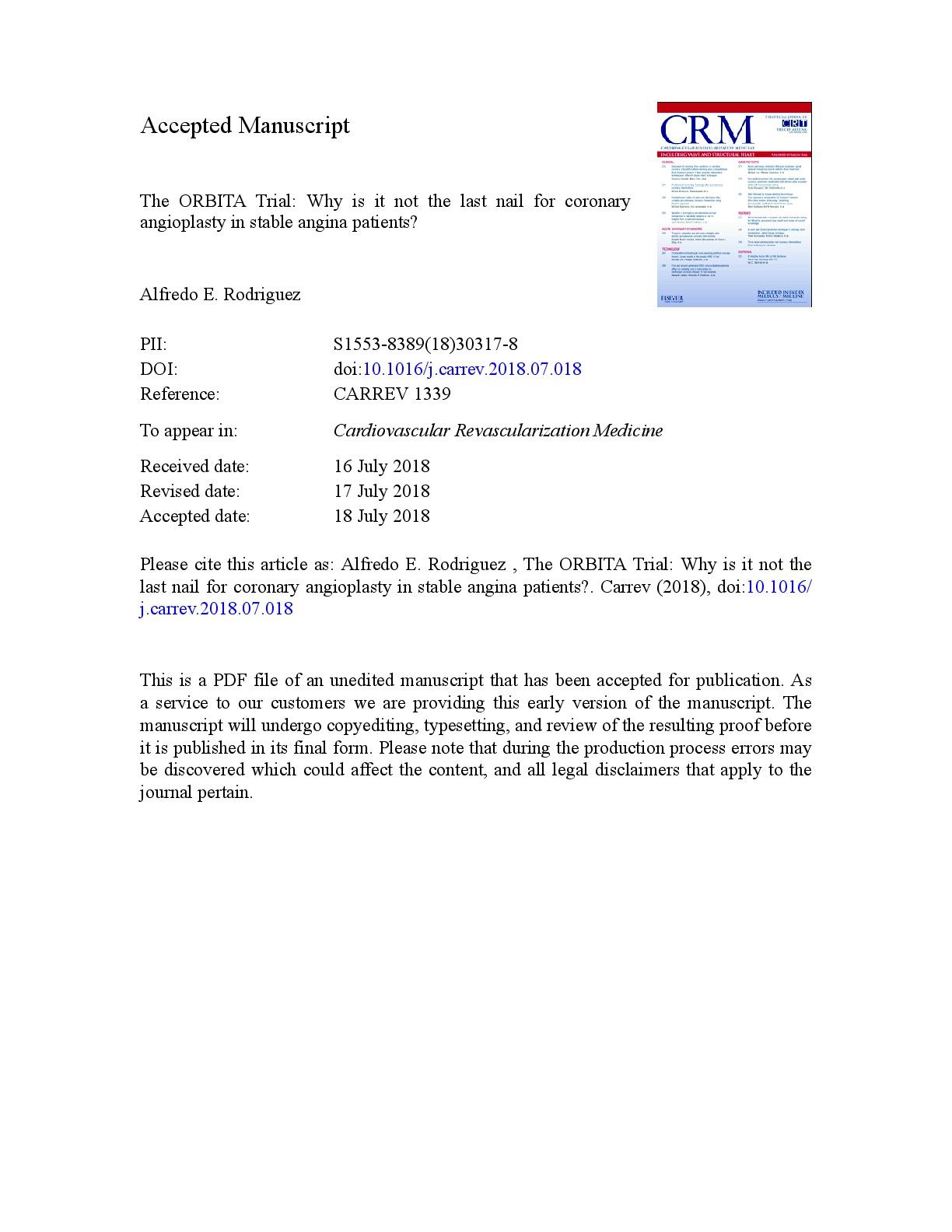El más extenso meta-análisis realizado entre CABG y stents en enfermedad arterial coronaria compleja demuestra que los pacientes tratados con CABG tienen significativamente mayor incidencia de stroke que los tratados con PCI y stents. Esto se debe a una mayor incidencia de accidentes cerebrovasculares durante los primeros 30 días del procedimiento.
http://www.onlinejacc.org/content/72/4/386
 Read More
Read More

